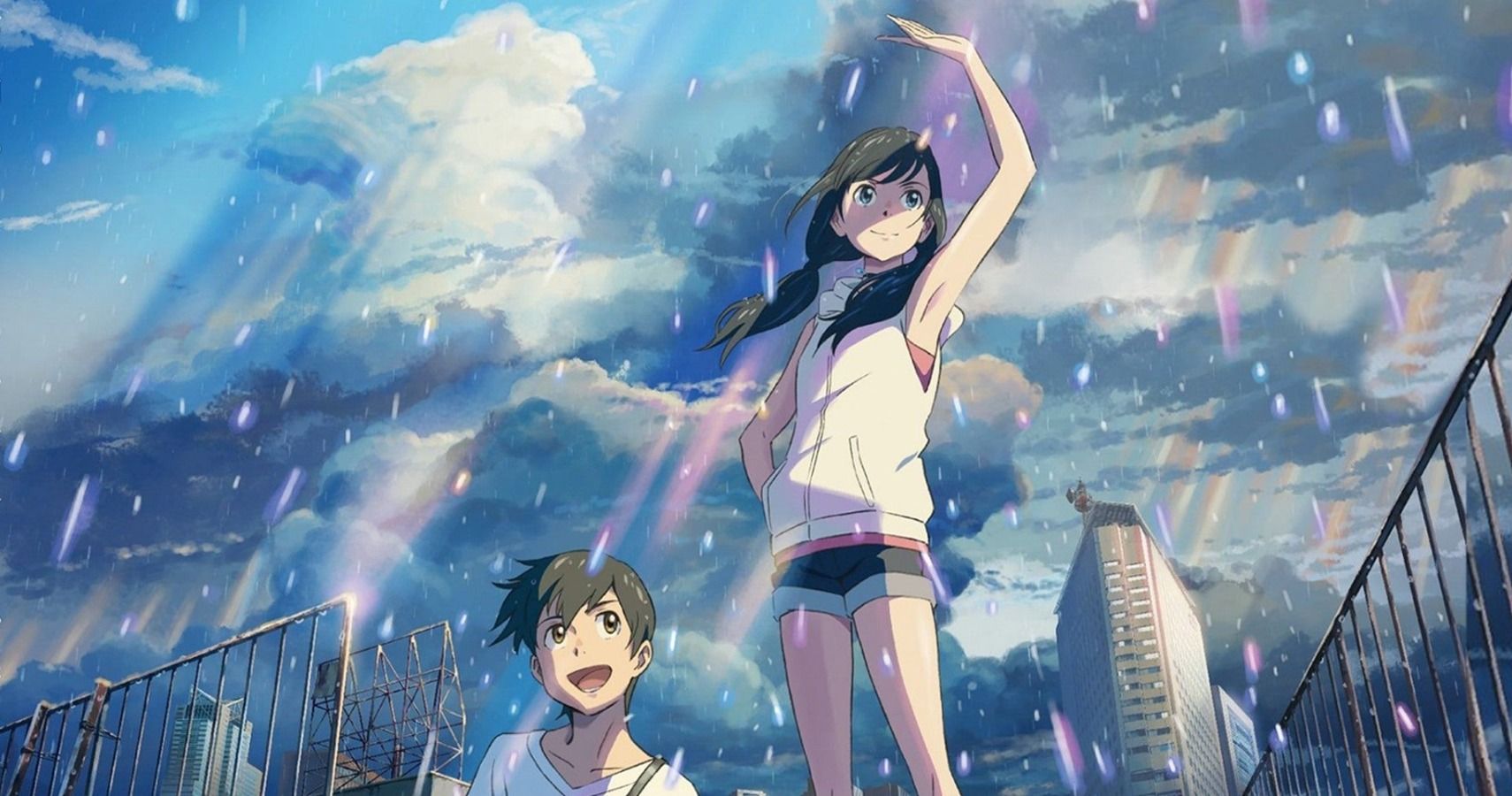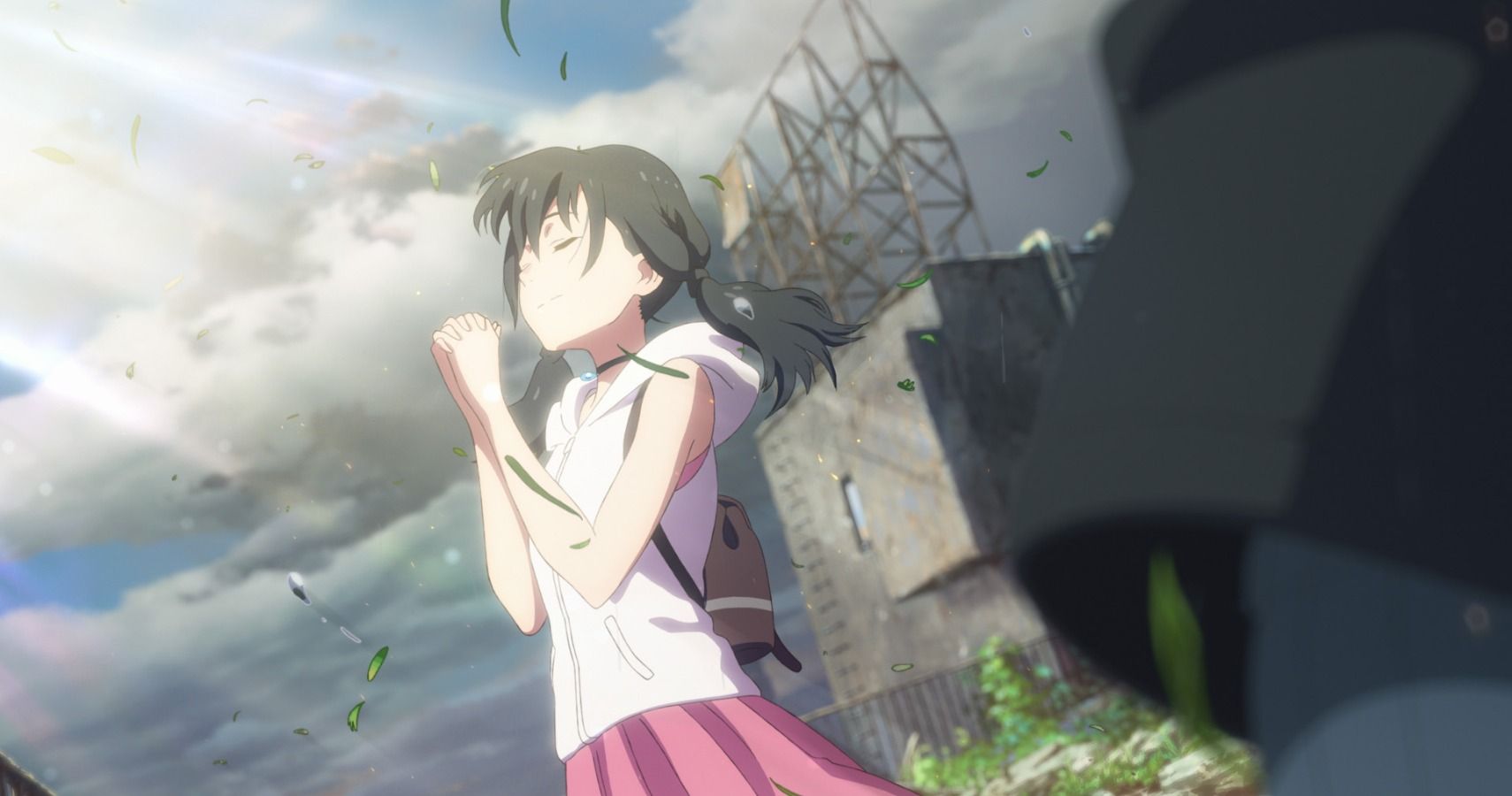Makoto Shinkai launched himself into the anime stratosphere with the release of Your Name in 2016, proving he can rightfully stand alongside legendary greats like Hayao Miyazaki, Mamoru Hosoda, Masaaki Yuasa, and the late, great Satoshi Kon. It was a profound romantic comedy that toyed with the concept of identity and anxieties of young people that struck a chord with millions, explaining why it rapidly overtook Studio Ghibli’s Spirited Away at the Japanese Box Office.
It’s a film that holds an immeasurably special place in my heart, an accolade that made the underwhelming nature of its successor all the more painful. Weathering With You is a pseudo sequel of sorts to Your Name, taking place in the same universe and carrying over a number of thematic elements. It’s a romantic comedy, and once again revolves around a young, spritely couple seeking to be together no matter what. In this case, getting the girl results in global warming. She wasn’t worth it, mate.
The narrative revolves around Hodaka Morishima, a young boy who flees to Tokyo in order to escape a troubled life at home. With nothing in the world to his name, he sleeps on the streets and desperately saves pennies to afford a Big Mac at McDonalds. Here, he meets a young girl named Hina Amano. A seemingly normal girl, Hina scurries off with a playful wink and isn’t seen again until Hodoka saves her from Yakuza in the pouring rain. Sadly these aren’t the nice kind from Sega’s beloved franchise.
For me, this is the exact moment where Weathering With You drops the ball. Earlier in the film after knocking over a bin, Hodoka picks up a pistol wrapped in plastic. Afraid to get in trouble, he stuffs the firearm into his bag and acts like nothing happened. When the aforementioned Yakuza are pounding his face into the dirt, Hodoka pulls the gun from its hiding place and threatens to open fire. He narrowly misses, shattering a streetlight before fleeing the scene as a wanted criminal.
This entire scene feels messy and underdeveloped, with the firearm’s presence being linked back to a cache of weapons that have been snuck into the capitol. It’s mentioned so briefly on a television screen in a single shot, so the majority of viewers will miss it and be confused as to why a gun has appeared simply to create melodrama that salvages poor writing. It only worsens from here, with only a few bright spots, yet they all feel like a pale imitator of what came before.
Weathering With You takes place in a vision of Tokyo that is trapped in a state of eternal rainfall. The populace have adapted to such circumstances, convinced it is little more than a prolonged wet spell rather than anything abnormal. In the first act, Hina discovers that she can control the weather, spilling sunlight from the sky that evaporates rainwater in seconds. It’s a wondrous concept, and is used to brilliant effect until Hina learns the power is slowly draining her life away, and she must be sacrificed as a goddess to end the rainfall for good.
However, it falters once again as an ancient prophecy about a sunshine goddess is dumped into our laps in a matter of moments. It’s exposition of the laziest variety, hurled in to salvage mediocre writing and a central romance that doesn’t have a chance of carrying the plot. When the penny drops and we’re expected to buy Hina and Hodoka as a romantic couple, it all falls flat. We’ve had no indication to believe they’ve fostered a romantic connection, and Hodoka doesn’t have enough charm as a protagonist for me to cheer him on.
So when he’s sprinting towards Hina during the climax hoping to reclaim his eternal love, I was cringing at the screen and lamenting the endless potential this film had squandered. I’ll admit, I got a tinsy bit choked up when Radwimp’s Grand Escape began blaring as our lovey-dovey couple plummeted from the sky, although this is praise towards the soundtrack, not the fumbling romance that Shinkai is trying desperately to convince us really matters. It doesn’t, and that’s because Weathering With You undermines itself at every turn by reminding us of its integral connection to Your Name.
I get it. Your Name was a blockbuster, and more popular than all anime films before it, but constantly referencing its characters only serves to take away from Hina and Hodoka’s journey as it unfolds. The central couple of Your Name have brief cameos in Weathering With You, and this is fine, but they’re executed in such a blatant, condescending manner that it’s clear Shinkai is aiming to pander to his audience instead of telling a new story worth remembering.
It’s a wink and nod bastardisation of the legacy his previous film has built, like the director was too afraid to move on, or knew all these needless references would appeal to the widest audience possible. The narrative beats are all the same, but the characters aren’t nearly as well developed, so it feels like a boring retread instead of a true successor. My fear is that now this popular formula is cemented, Shinkai won’t dare venture forth to explore new, more experimental ideas in fear of pushing audiences away.
I probably sound like a broken record, tearing this film apart in a way it doesn’t deserve. Your Name was basically a weeaboo take on Freaky Friday, but it was placed together with such lovingly crafted care. It felt like a monolithic puzzle that pushed anime forward as a medium, exploring deep, subversive themes while simultaneously offering an adventure that anyone could relate to. It was also a lightbulb moment to recognising my identity as a trans person, but I’ll dive into that kettle of fish on another day.
Knowing all of this, Weathering With You could have had a similar impact on the anime world. Instead, it opted for a lazy route. Plot points, character personalities and even musical stylings are crudely transplanted with references that treat the audience like idiots. At least the film is obscenely gorgeous, so it’s worth watching for some animated eye candy. Tragically, this wasn’t nearly enough for me.



